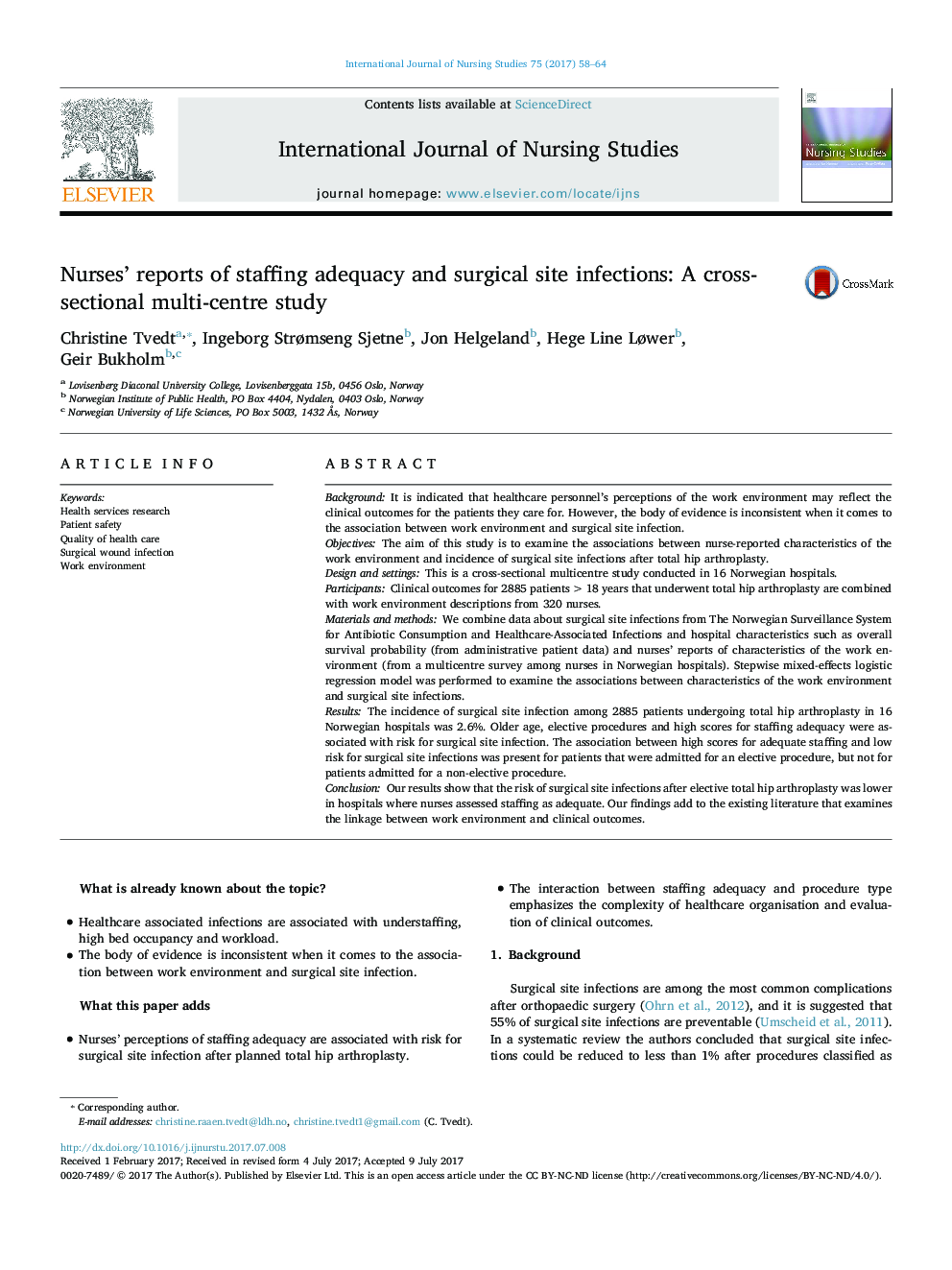| Article ID | Journal | Published Year | Pages | File Type |
|---|---|---|---|---|
| 5120930 | International Journal of Nursing Studies | 2017 | 7 Pages |
BackgroundIt is indicated that healthcare personnel's perceptions of the work environment may reflect the clinical outcomes for the patients they care for. However, the body of evidence is inconsistent when it comes to the association between work environment and surgical site infection.ObjectivesThe aim of this study is to examine the associations between nurse-reported characteristics of the work environment and incidence of surgical site infections after total hip arthroplasty.Design and settingsThis is a cross-sectional multicentre study conducted in 16 Norwegian hospitals.ParticipantsClinical outcomes for 2885 patients >18Â years that underwent total hip arthroplasty are combined with work environment descriptions from 320 nurses.Materials and methodsWe combine data about surgical site infections from The Norwegian Surveillance System for Antibiotic Consumption and Healthcare-Associated Infections and hospital characteristics such as overall survival probability (from administrative patient data) and nurses' reports of characteristics of the work environment (from a multicentre survey among nurses in Norwegian hospitals). Stepwise mixed-effects logistic regression model was performed to examine the associations between characteristics of the work environment and surgical site infections.ResultsThe incidence of surgical site infection among 2885 patients undergoing total hip arthroplasty in 16 Norwegian hospitals was 2.6%. Older age, elective procedures and high scores for staffing adequacy were associated with risk for surgical site infection. The association between high scores for adequate staffing and low risk for surgical site infections was present for patients that were admitted for an elective procedure, but not for patients admitted for a non-elective procedure.ConclusionOur results show that the risk of surgical site infections after elective total hip arthroplasty was lower in hospitals where nurses assessed staffing as adequate. Our findings add to the existing literature that examines the linkage between work environment and clinical outcomes.
